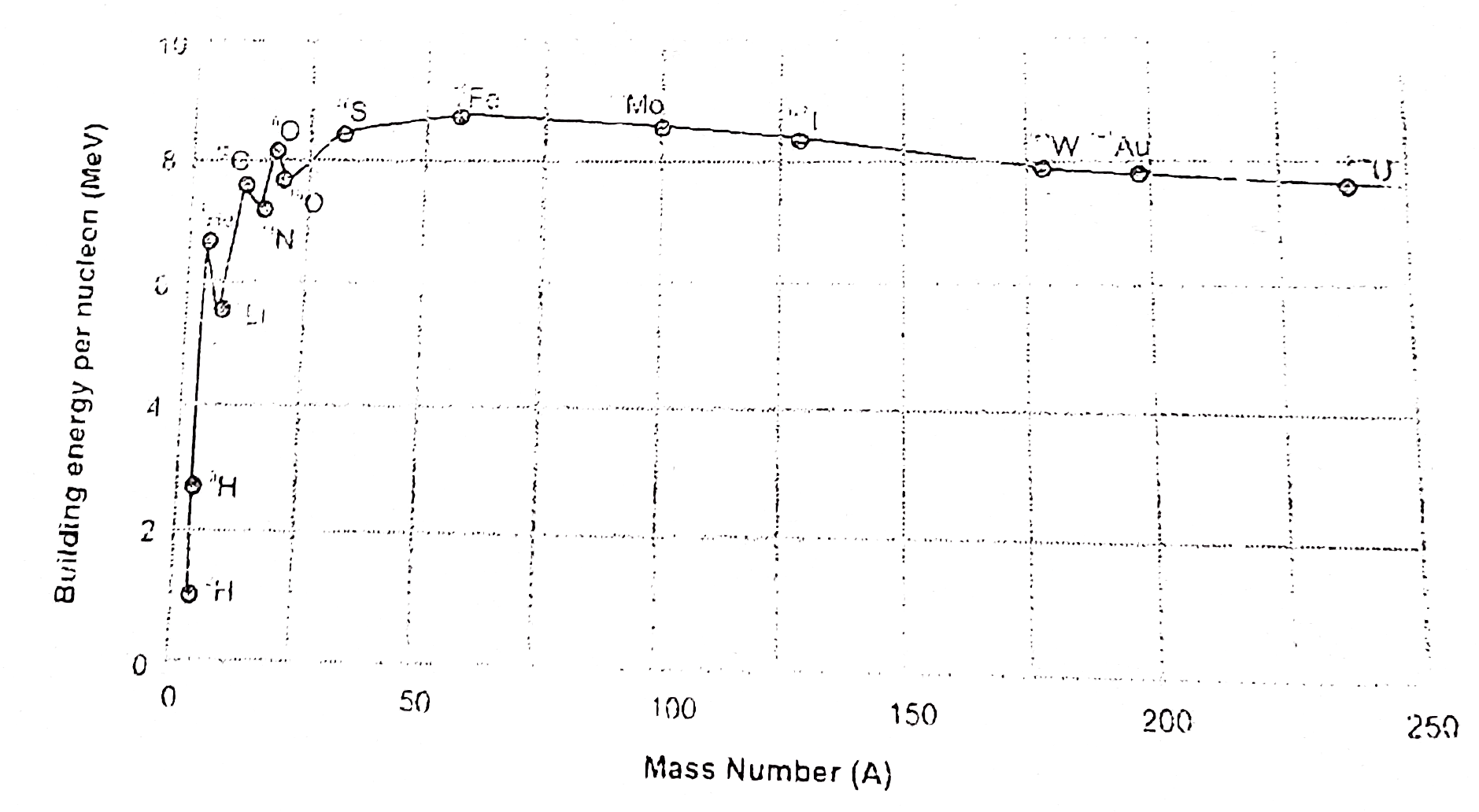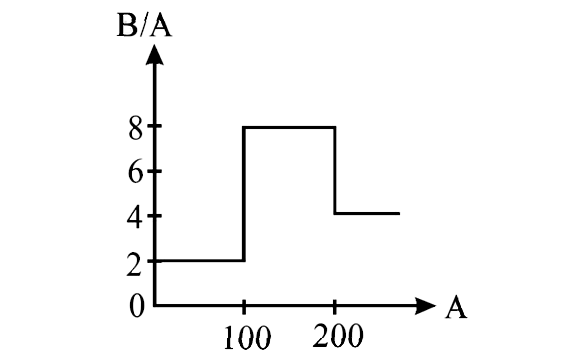Consider the following statements and state whether true (T ) or false ( F ) :
(i) Nuclear fission is normally followed by emission of β− - particles.
(ii)Emission of α− particle is normally followed by emission of γ− rays
(iii) As the mass number A increases, the binding energy per nucleon in a nucleus also increases
Choose the correct order from the options given below
T T T
T T F
F T T
T F T
The correct Answer is:B
To solve the question, we need to evaluate each of the three statements regarding nuclear processes and determine whether they are true (T) or false (F).
Step 1: Evaluate Statement (i)
Statement: "Nuclear fission is normally followed by emission of β⁻ particles."
- In nuclear fission, the heavy nucleus splits into smaller fragments, which often have an excess of neutrons. To stabilize the neutron-to-proton ratio, these fragments undergo beta decay, where a neutron is converted into a proton, emitting a beta particle (β⁻).
- Conclusion: This statement is True (T).
Step 2: Evaluate Statement (ii)
Statement: "Emission of α particles is normally followed by emission of γ rays."
- When an alpha particle is emitted from a nucleus, the remaining nucleus is often left in an excited state. To return to a lower energy state, the excited nucleus can emit gamma rays (γ).
- Conclusion: This statement is True (T).
Step 3: Evaluate Statement (iii)
Statement: "As the mass number A increases, the binding energy per nucleon in a nucleus also increases."
- The binding energy per nucleon does not consistently increase with mass number A. It generally increases with A up to iron (Fe), where it reaches a maximum, and then it starts to decrease for heavier nuclei. Thus, the binding energy per nucleon does not continuously increase with mass number.
- Conclusion: This statement is False (F).
Final Evaluation of Statements:
- Statement (i): True (T)
- Statement (ii): True (T)
- Statement (iii): False (F)
Correct Order of Statements:
- The correct order is: (i) T, (ii) T, (iii) F.
Answer: The correct option is B (T, T, F).
---
Statement: "Nuclear fission is normally followed by emission of β⁻ particles."
- In nuclear fission, the heavy nucleus splits into smaller fragments, which often have an excess of neutrons. To stabilize the neutron-to-proton ratio, these fragments undergo beta decay, where a neutron is converted into a proton, emitting a beta particle (β⁻).
- Conclusion: This statement is True (T).
Statement: "Emission of α particles is normally followed by emission of γ rays."
- When an alpha particle is emitted from a nucleus, the remaining nucleus is often left in an excited state. To return to a lower energy state, the excited nucleus can emit gamma rays (γ).
- Conclusion: This statement is True (T).
Statement: "As the mass number A increases, the binding energy per nucleon in a nucleus also increases."
- The binding energy per nucleon does not consistently increase with mass number A. It generally increases with A up to iron (Fe), where it reaches a maximum, and then it starts to decrease for heavier nuclei. Thus, the binding energy per nucleon does not continuously increase with mass number.
- Conclusion: This statement is False (F).
- Statement (i): True (T)
- Statement (ii): True (T)
- Statement (iii): False (F)
- The correct order is: (i) T, (ii) T, (iii) F.
Similar Questions
As the mass number A increases, the binding energy per nucleon in a nucleus.
View SolutionMention whether the following statements are true (T) or false (F).
View SolutionConsider the following statements: (i) Nuclear fission is normally followed by emission of β-particles. (ii) Emission of α-particle is normally followed by emission of γ rays. (iii) In carbon-carbon cycle of fusion reaction which powers the large starts, two carbon nuclei combine to form a magnesium nucleus:
The correct order of True/False in above statements is
View SolutionWhen the number of nucleons in a nuclues increases the binding energy per nucleon
View SolutionEmission of β -particle is equivatent to:
View SolutionAssertion: The nuclear energy can be obtained by the nuclear fission of heavier nuclei as well as by fusion of lighter nuclei.
Reason: As the mass number increases, the binding energy per nucleon, first increases and then decreases.
View SolutionDraw the graph showing thervariation of binding energy per nucleon with mass number. Give therason for the decrease of binding energy per nucleon for nuclei with high mass numbers.

The binding energy per nucleon for nuclei with high mass number is low due to the large coulomb repulsion between the protons inside these nuclei.
View SolutionAssume that the nuclear binding energy per nucleus(B/A) versus mass number (A) is as shown in the figure Use this plot to choose the correct (s) choice given below

View SolutionThe emission of an α− particle reduces the mass of nuclei by 4 units and increases its atomic number by 2.
View SolutionProton bombardment on Th230 followed by emission of two alpha particles will produce:
View Solution
